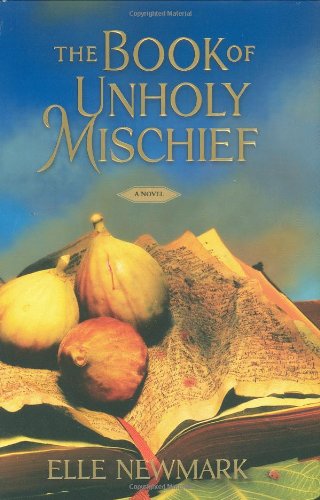The Book of Unholy Mischief
In her highly anticipated debut, Elle Newmark faces a daunting task: produce a novel that lives up to the hype surrounding its phenomenal auction and still stands on its own in a time where anything resembling The Da Vinci Code fast approaches its expiration date. Fortunately, Ms. Newmark succeeds, though perhaps not quite as literally as some readers will expect.
Set in 15th century Venice, the novel conjures with delightful ease the cramped canals, crumbling palazzos, and sumptuous allure of the floating city, as seen through the eyes of a wily urchin named Luciano. Orphaned and intelligent, hopelessly enamored of a seductive convent beauty, Luciano is snatched off the streets unexpectedly by the Doge’s own master chef and brought to work in the kitchens, where he soon discovers that his meticulous maestro of the culinary arts guards untold secrets. All of Venice and most of Italy’s rapacious nobility are seeking a book of alleged supernatural powers, one that could contain the key to immortality itself. As he becomes privy to the chef’s own secrets, Luciano finds himself thrust into an unpredictable world where recipes are seasoned with danger.
Newmark excels in describing the sensory delights of food and its mystical influences on the human heart; yet as the truth about the unholy book of the title becomes apparent, the familiar revelation of heretical gospels deprives the story of some of its fey originality. Nevertheless, Newmark’s Venice lingers in the mind—a place of sea-salt and veal in white wine, of ambition, violence, and greed in an era when the quest for otherworldly power coupled quixotically with the worldly pleasures of the table.










